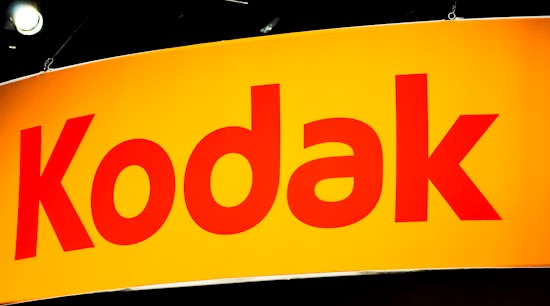
Executives: Measure These 3 Metrics to Grow Sales and Improve ROI
For most companies, sales and marketing expenses represent the largest non-product/service related overhead costs, yet executives rarely understand how to measure the value of these costs, other than by asking “did revenue increase?”
By the time it’s clear whether or not a marketing/sales expense actually generated revenue, it is unfortunately too late, because the costs are incurred, or what is otherwise known as sunk. In most companies, this lack of quantifiable and predicitable results (ROI) occur quarter after quarter and year after year. This is infuriating to c-level executives familiar with return on investment measures in other areas of the business.
ROI on lead generation activities isn’t something we “hope” to get. It’s something that is planned, measured and adjusted based on leading indicators, or indicators of success before the expense is fully incurred. In other areas of business, ROI is an important financial metric for asset purchase decisions (such as computer systems, machinery or service vehicles) and traditional investment decisions, such as management of stock portfolios or use of capital.
So, why is it so hard to quantify ROI before funding people, projects or programs related to sales and marketing? Because “dollars out” don’t always equal “dollars in,” and your team (or vendor) is afraid to quantify or predict ROI, for fear they might not hit the goal.
Here are the top three metrics to measure in order to determine if your sales and marketing activities are generating results.
No. 1: Revenue Multiple (the best indication of ROI)
The first and most important metric to track is the revenue multiple or revenue-based ROI. Dollars in, or actual revenue generated (from a lead generation, business development or marketing program) should equate to a multiple of the dollars spent.
The rule of thumb here is that a new program should generate greater than 2X (or two times) the revenue of the cost of the program and do so fairly quickly. So, if your new lead generation program costs $15,000 in its first 90 days, it should generate $30,000 in quantifiable revenue, period, end of story.
Over time, the program should increase its multiple to a greater than 5X revenue increase for every dollar spent on the sales or marketing program. If you’re not seeing similar results, it may be time to rethink what you’re doing, how you’re doing it, or who you’re doing it with.
For B2B companies with a longer sales cycle, this metric is more difficult to measure, so it would be wise to use what is known as “Pipeline ROI.”
If your B2B company is interested in ROI-based demand generation, reach out to us, and someone from our B2B practice will guide you through the analysis.
No. 2: Net Profit Ratio
For smaller businesses, a net profit ratio (ROI calculation) is critical, as not all demand generation initiatives result in profitable revenue. Growth-funded growth techniques measure the actual profit generated from the sales and marketing program, as well as the revenue generated, to ensure the company is investing in sales and marketing proportionate to profit generation.
Taking a growth-funded growth mindset is critical for smaller brands who want to grow quickly, but responsibly. Once the ratio is established, only a portion of the net profit is reinvested into new sales and marketing programs. This metric ensures profitable growth, rather than growth for growth’s sake.
No. 3: Cost of Acquisition
This metric should be customized for each sales and marketing activity and tracked intensely, as it is the best predictor of efficient demand generation strategies long-term. There are three metrics to measure for increasing efficiency of demand generation:
- Cost Per Lead: This measure reflects how much it costs to drive a call into your company or call center, or for a lead to be captured on your website. Managing this lead, and driving the cost per lead down over time, will help ensure your demand generation program is profitable.
- Cost Per Opportunity (For B2B companies only): In B2B programs, there is a distinct difference between a lead who is interested and an opportunity who has started the buying process. Managing the cost for both is key to accelerating the ROI revenue multiple.
- Cost Per Sale: Ultimately, not every lead will buy from you, regardless of how much you want them to. Quantifying the cost per sale will ultimately allow you to modify your demand generation efforts and increase the efficiency of those efforts over time.
BONUS: Four Tips for Executives Who Want to Grow Business with an ROI-focused Model
- Do not let anyone tell you that results can’t be measured or tracked to achieve an ROI. At Promote On Purpose, we ALWAYS find a way to measure ROI.
- Do not let anyone tell you that “it takes time to get an ROI.” If you can’t achieve a more than 2X revenue in from dollars spent in 90 days or less, then your lead generation program isn’t being planned or executed correctly.
- Website traffic is not a predictor of ROI, nor is lead generation. The only measure of success is actual revenue, compared to the cost of acquiring that revenue. All ROI models track metrics, but the metrics measured must tie directly back to revenue gained.
- Performance guarantees are not simply nice-to-have. In today’s digital marketing landscape, every vendor agreement should include a performance guarantee. You should hold your sales and marketing team accountable to performance goals as well.
Yes, Revenue-based ROI Is Trackable and Doable
It doesn’t take a rocket scientist to quantify the ROI from sales and marketing programs, but it DOES take a team that knows how to measure, track and deliver revenue-based ROI to ensure profitability. If you’re ready to quantify the value of your sales and marketing programs, contact us. We love to win, and we guarantee results.
To learn more about revenue-based ROI models, give us a call at (844) 808.ECHO (3246) or visit the Promote On Purpose contact page to connect with us online.



